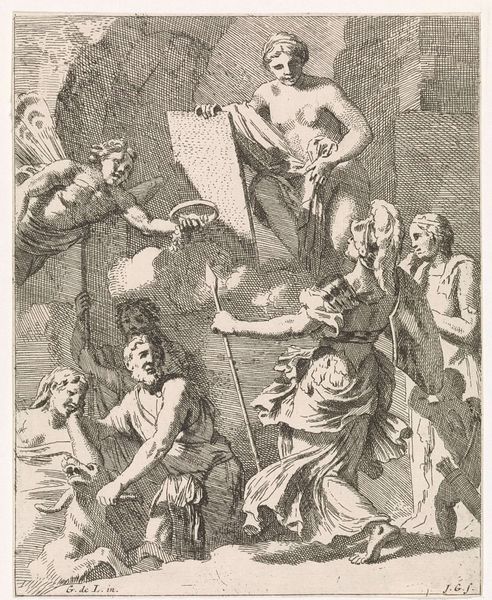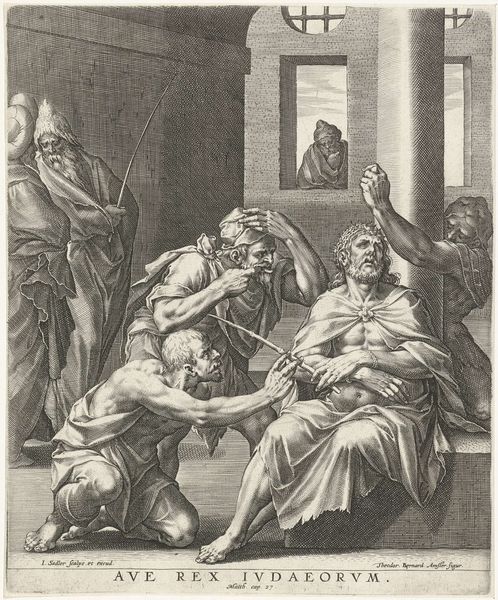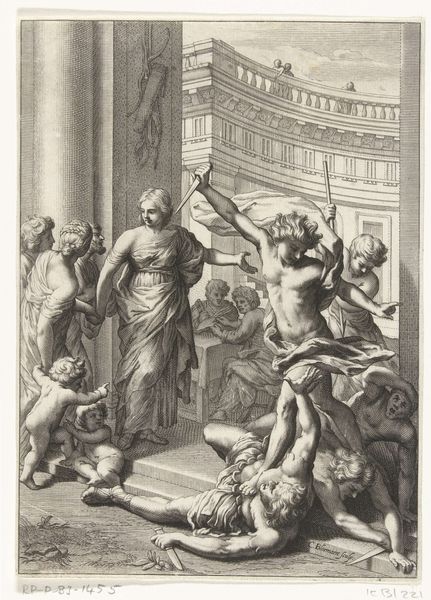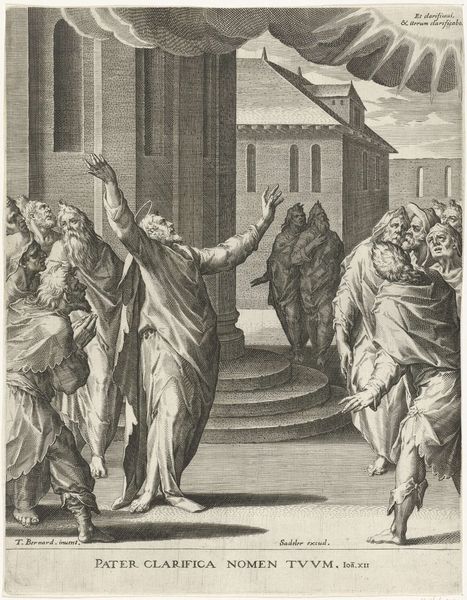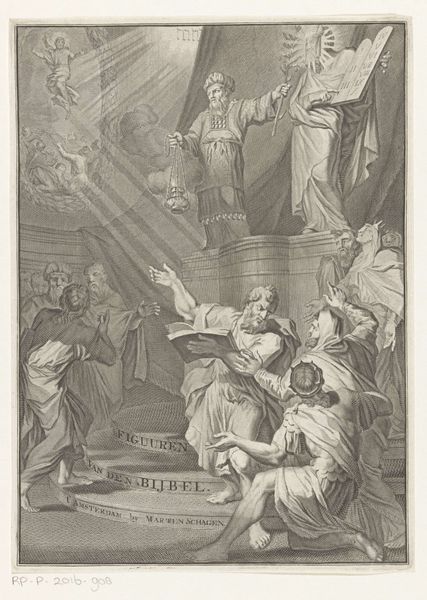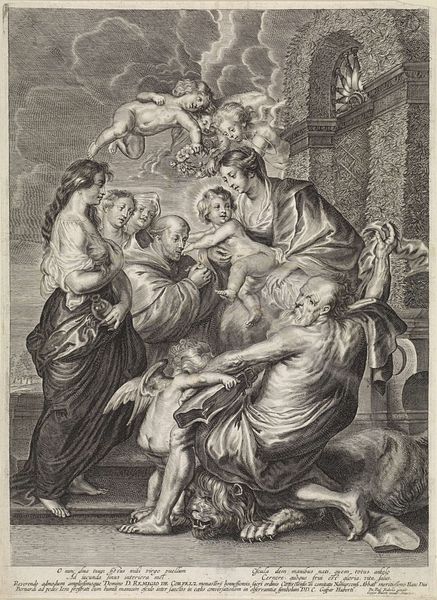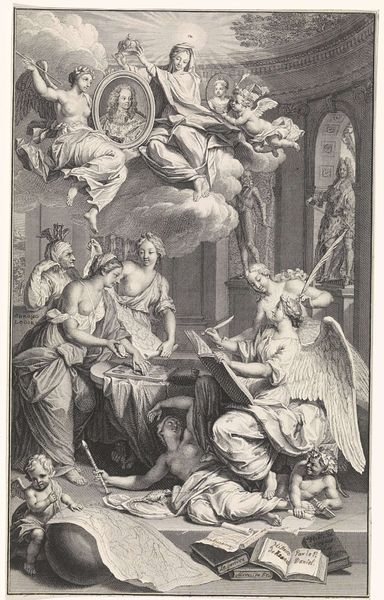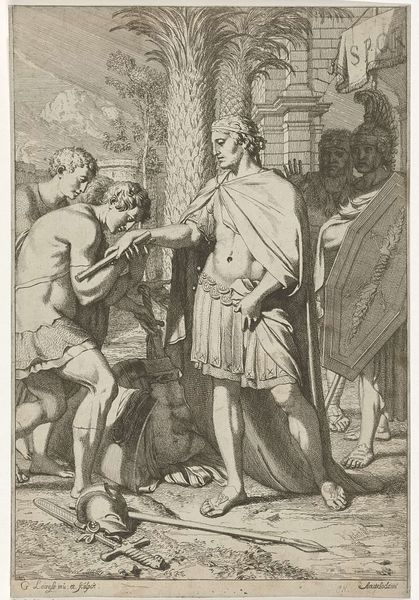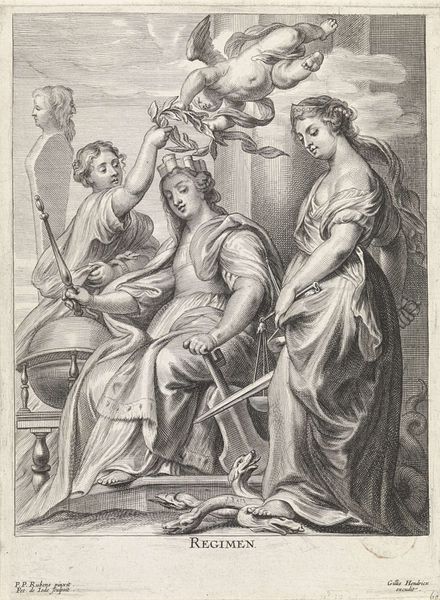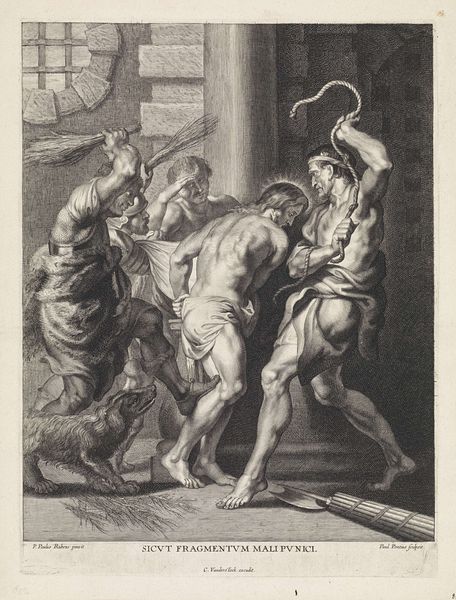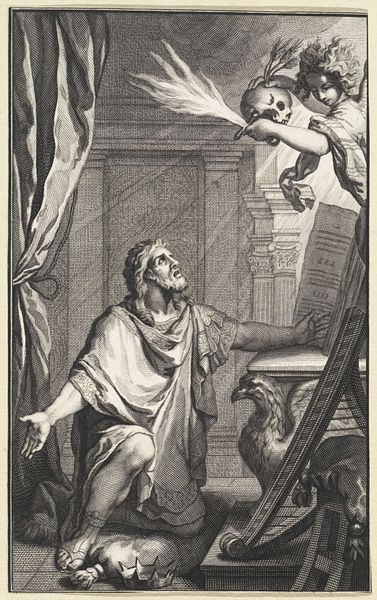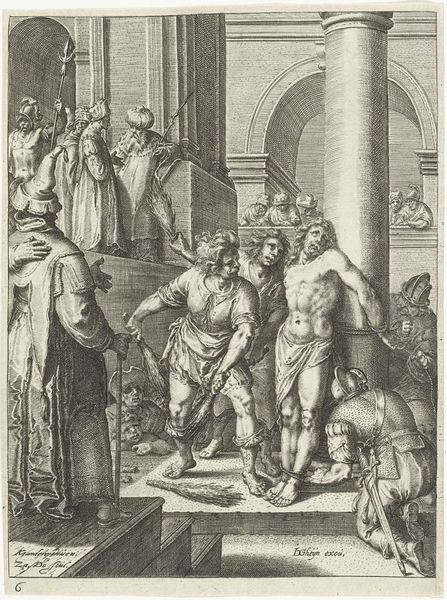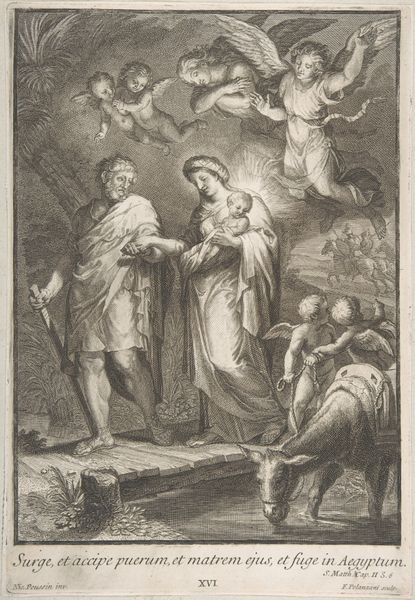
engraving
#
neoclacissism
#
old engraving style
#
figuration
#
historical fashion
#
19th century
#
history-painting
#
academic-art
#
engraving
#
historical font
Dimensions: height 100 mm, width 70 mm
Copyright: Rijks Museum: Open Domain
Curator: Lambertus Antonius Claessens created this engraving, "Pythagoras discovers the harmonic proportions in drawing", in 1803, embracing the Neoclassical style. Editor: It’s certainly of its time! The monochrome palette and crowded composition give it a studious, almost theatrical air. Do you sense that calculated drama too? Curator: Absolutely! Neoclassicism drew heavily on idealized versions of classical antiquity, aiming for a sense of order and rationality, reflected here. It suggests the social and cultural institutions prized this historical style. Note how the poses and drapery echo ancient sculptures, lending the scene a sense of timeless gravitas. It's designed for public edification, presenting Pythagoras as a symbol of intellectual enlightenment. Editor: The way he holds the hammer aloft feels deliberately staged, a symbolic gesture. And all the muscled blacksmiths look perplexed – what’s the visual metaphor connecting math to drawing? Perhaps this has something to do with that famous “divine proportion?" Curator: Yes, it gets at that idea! Claessens aims to depict Pythagoras's discovery that musical harmony—and by extension, artistic beauty—could be expressed mathematically. This ties into the Neoclassical emphasis on reason as the foundation for art. It proposes universal truths. Editor: I get it now. The men hammering away aren’t making noise—they’re revealing cosmic law! It reminds me that art, in its ideal function, inspires people by reflecting grand designs like harmony. And in our own practice of viewing this work—how wonderful to be transported. Curator: I agree. The engraving serves as a time capsule, encapsulating early 19th-century ideals. The engraving connects art and mathematics, demonstrating how the artist sees those as linked through ratio and structure. The artwork challenges modern viewers to look deeper. Editor: What a fascinating peek behind the curtains. And Claessens encourages us to question what makes the old new and beautiful through these harmonies.
Comments
No comments
Be the first to comment and join the conversation on the ultimate creative platform.
